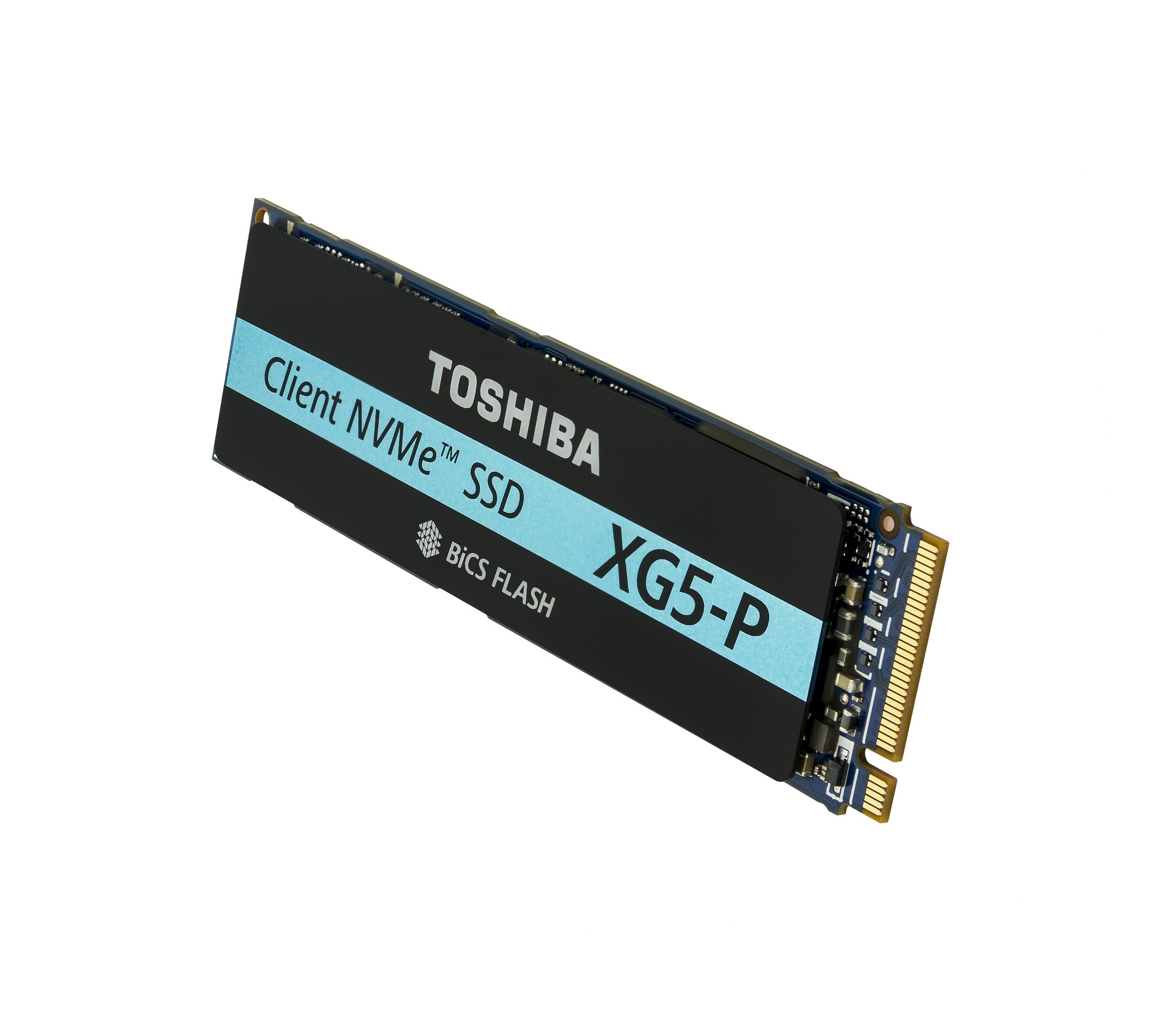
Toshiba unveils 2TB XG5-P NVMe SSD
For computer enthusiasts, we are living in a very exciting time. Hardware is faster than ever, while prices for parts are quite reasonable. You can build a very capable PC without breaking the bank.
One of my favorite components is the solid state drive. Not only are they much faster than traditional mechanical hard disk drives, but they can reduce power usage too -- a big win for battery life on laptops and tablets. Today, Toshiba unveils its latest such drive and it looks amazing. The 2TB XG5-P is NVMe based, meaning it will be blazing fast.

ADATA SE730H USB-C External SSD [Review]
There are two very important technologies changing the computer landscape nowadays -- solid state drives and USB-C. SSDs are flash-based storage devices, meaning they are faster than traditional hard disk drives, while having no moving parts either. USB-C is just a connection type, but its reversible nature makes it an absolute dream for users -- Type-A connectors were a hassle as you had a 50-percent chance of inserting it incorrectly.
When these two things come together, you get a fast portable drive that can easily connect to the newest computers, such as the Apple MacBook Pro. I have been testing a very intriguing such external SSD lately from renowned company ADATA. This manufacturer is known for its high-quality memory products, such as RAM, flash drives, and solid state drives. The 512GB SSD I am testing, called "SE730H," is extremely small, very fast, and quite durable. It uses the USB 3.1 generation 2 interface.
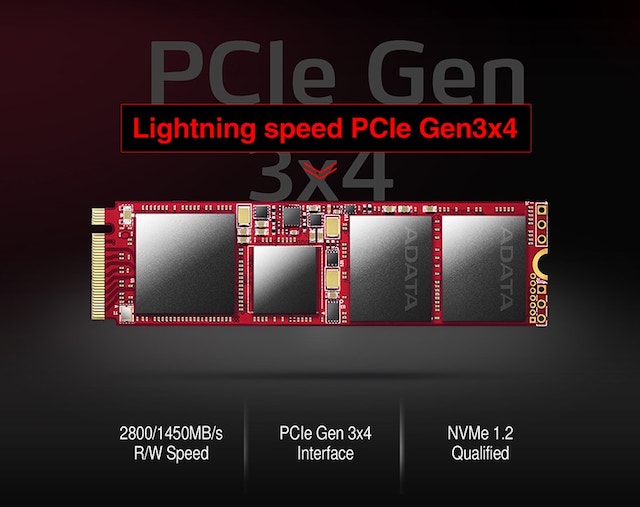
ADATA launches XPG SX9000 PCIe NVMe M.2 SSD for PC gamers and enthusiasts
NVMe solid state drives are rewarding computer users with exceptional speed nowadays. Compared to SATA, they are much faster, and thanks to the M.2 form factor, they are much smaller too. While 2.5-inch drives are fine for a desktop, they are too large for modern laptops -- especially as manufacturers try to push the boundaries of thinness.
If you are looking to upgrade your laptop or desktop with a fast PCIe NVMe M.2 SSD, ADATA has a new product which might pique your interest. Called "XPG SX9000," it offers tremendous performance using the M.2 2280 form factor. The "XPG" in the product name indicates this ADATA has created this drive for both gamers and enthusiasts. The company is even including a very impressive 5 year warranty.

Samsung launches 'Portable SSD T5' with USB-C and up to 2TB storage capacity
Portable solid state drives are better than mechanical hard drives for a few reasons. Obviously they are faster, but more importantly, they are more durable, as there are no moving parts. For those that travel a lot, for instance, a portable SSD is a safer product for throwing in a bag. Another big benefit is size -- modern portable SSDs are getting quite small, meaning they take up less room on a desk or in a backpack.
Today, Samsung launches its newest such drive, called the "Portable SSD T5." This beautiful drive features a USB-C connector and comes in two color options -- Deep Black and Alluring Blue. Since this is a Samsung product, it should last. If there are any issues, however, the company is including a three year warranty.
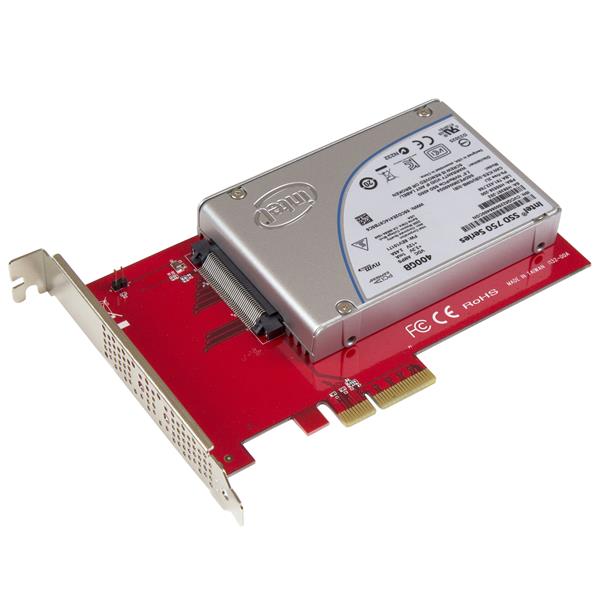
StarTech launches U.2 NVMe SSD to PCIe Drive Adapter Expansion Card
SATA is so out of style. Nowadays, all the cool kids are using much-faster NVMe PCIe-based solid state drives that utilize either U.2 or M.2 connectors; I prefer the latter, but I digress. Of course, to maximize the performance of these ultra-fast drives, you will not only need the appropriate connectors, but PCIe 3.0 too. If you don't have the correct connector, all is not lost. Thanks to PCIe adapter cards, you might able to add compatibility to your system without the need of a new motherboard.
While M.2 adapter cards are very commonplace, U.2 variants are not. Today, StarTech is back with another very useful product -- the U.2 to PCIe Drive Adapter Expansion Card. If you don't have a U.2 connector port, but do have a PCIe 3.0 x4 or higher slot, this card will allow you to connect a compatible drive at top speed. It will work with PCIe 1.0 and 2.0 too, albeit at much slower speeds. You can mount the 2.5-inch U.2 drive (15mm, 12.5mm, 9.5mm, 7mm, and 5mm height) directly on the card, meaning there are no unsightly cables.
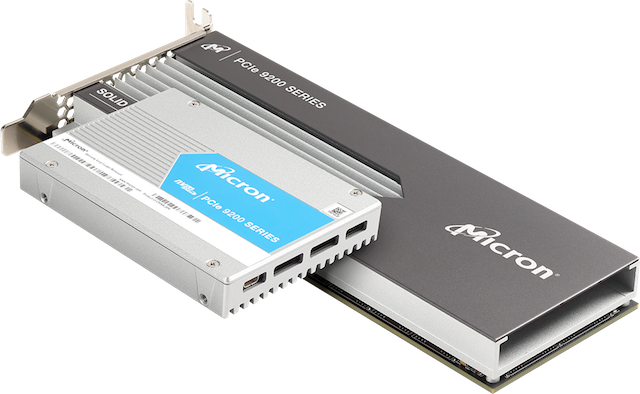
Micron unveils insanely fast 9200 PCIe NVMe SSD series with up to 11TB capacity
Solid state drives are all the rage nowadays, but as fast as they are, they don't often compare to mechanical hard drives from a capacity standpoint. Heck, my pricey MacBook Pro came with a very fast NVMe drive, but with a mere 256GB of storage. This is quite paltry when cheap laptops using a HDD can often exceed four times that capacity. Of course, there is a big speed tradeoff, making the smaller capacity preferable to some. It stinks that many consumers have to choose between a fast yet small SSD or a slow and roomy HDD.
What if consumers didn't have to choose though? A new NVMe SSD series from Micron, dubbed 9200, offers both extreme speed and monstrous capacity. How much storage, you ask? Up to 11TB! The drive is more focused for businesses, however, as it will likely be priced well out of reach of the average consumer. In other words, it isn't designed for your fancy gaming rig, but instead, servers. Still, it is exciting to think that these large capacity SSDs will trickle down to consumers eventually.

Intel's new 'ruler' SSD form factor enables up to 1PB of storage
Enterprise hardware products aren't the sexiest things around. Most of the time you'll struggle to stay awake reading the announcement. But not this time. Intel's newly unveiled "ruler" form factor for server SSDs is quite intriguing for a change.
Intel has moved away from the traditional design that we have come to expect in consumer and enterprise SSDs to a "long, skinny" shape that enables it to push the envelope in terms of storage capacity.

Toshiba's new SG6 SSD series supports both older and newer PCs
It used to be that SSDs, for all the benefits they provided over a hard drive, were hard to justify due to their super high prices and limited storage options. But, nowadays, there's something for everyone in the SSD market, and the selection is frequently getting better.
Toshiba's new SG6 series is a good example, being offered in both SATA 3 and M.2 2280 form factors, in three storage options that can make many of us happy, and with transfer speeds that put the vast majority of drives to shame.
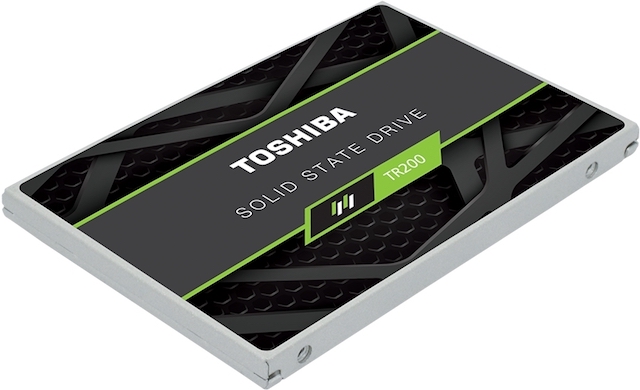
Toshiba unveils TR200 64-layer 3D TLC SATA SSD
SATA solid state drives aren't particularly exciting nowadays, but they are essential for consumers looking to upgrade existing computers without breaking the bank. By purchasing a 2.5-inch SSD, a computer user can easily upgrade their laptop. Not only should the notebook get a speed boost, but it can improve battery life too. Heck, these drives are great for desktops too -- especially if they do not have M.2 NVMe slots.
Today, Toshiba announces a new SATA SSD that is aimed at upgraders. Called TR200, it is a 2.5-inch drive that features 64-Layer 3D 3-bit-per-cell TLC flash memory.
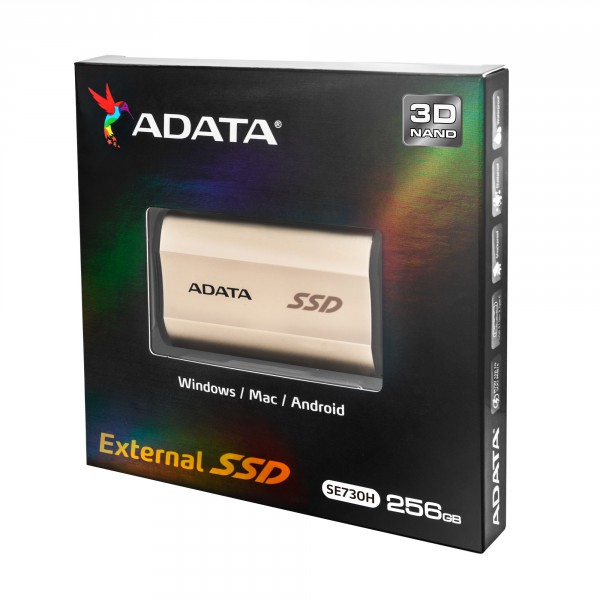
ADATA announces SE730H 3D NAND USB-C External SSD for Windows, macOS, and Linux
USB-C is the future, and if your computer doesn't have the connector, I feel sorry for you. While it isn't a necessity at the moment, it will be eventually. Luckily, you can sometimes leverage adapters and cables to connect a Type-C device to a machine that is Type-A only.
Speaking of USB-C devices, ADATA has a new 3D NAND External SSD that uses that connector. Called "SE730H," it is the successor to the company's diminutive "SE730." Not only does the new model offer higher capacities, but the 3D TLC NAND should lend to improved longevity. While it uses 3.1 gen 2, the drive tops out at 500MB/s for both read and write. The "H" variant retains the same good looks and MIL-STD-810G/IP68 water and dust proofing as the prior model too.
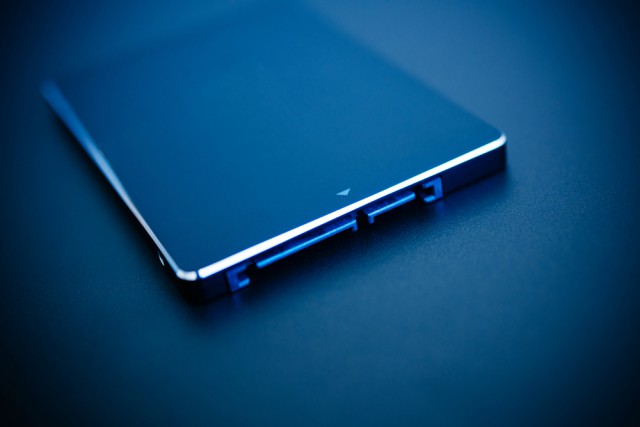
Does your IT team fully understand the security pitfalls of SSDs?
Solid state drives (SSDs) are a compelling proposition for IT procurement, as they have several advantages over hard disk drives (HDDs). The lack of moving parts means they generally last longer and are more reliable. Their faster access speed enables programs to run faster. Plus, they use less power, which improves device battery life and generates less noise. Prices are dropping fast, making this less of a factor when evaluating the two technologies side-by-side.
It’s no surprise that Gartner predicts 2017 will be the year revenue from enterprise sales of SSDs surpasses that from the older, more established technology. However, if organizations don’t want to run into substantial problems further down the line, a key question must be asked. Do IT and security teams have a good enough understanding of the technology to manage it appropriately? Take the data sanitization process at the point when an SSD-based device is due to be recommissioned, recycled or resold. Are the correct methods for carrying out and validating the complete sanitization and erasure of data both known and understood? Unfortunately, our research proves they’re not.
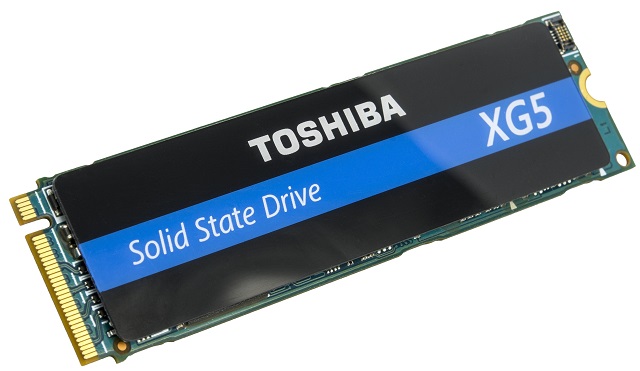
Toshiba announces XG5 PCIe NVMe M.2 SSD with 3D 64-Layer BiCS flash memory
NVMe solid state drives are finally becoming more mainstream, delivering speeds that consumers never imagined. When SATA-based SSDs hit the scene, they too were mind-boggling though -- when compared to mechanical hard drives at least. Nowadays, however, a new SATA solid state drive is rather boring, as they are all largely the same speed.
Today, Toshiba announces an impressive new NVMe SSD with 64-Layer 3D Flash. The XG5, as it is called, uses the 2280 form factor and M.2 connection. Since heat can impact performance, the company has wisely chosen to include a heatsink.
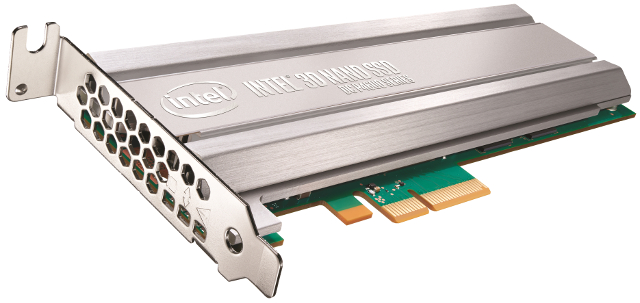
Intel unveils DC P4500 and P4600 3D NAND PCIe NVMe data center SSDs with up to 4TB capacity
Solid state drives are changing data centers for the better. These drives are not only faster, but more energy efficient too. While not necessarily more cost effective for businesses, prices are slowly on the decline. It is only a matter of time before mechanical hard drives are dead entirely. The death of HDD may not be in the immediate future, but make no mistake, it is coming.
Intel has been an SSD leader for a while, and the company has two new drives that are designed for data centers. Both the DC P4500 and P4600 feature 3D NAND, and can be had with two connection types -- a PCIe NVMe add-in card or 2.5-inch U.2. Both series of solid state drives offer capacities up to 4TB. Read speeds are up to 3270 MB/s, with write reaching 2100 MB/s -- depending on model and capacity, of course.
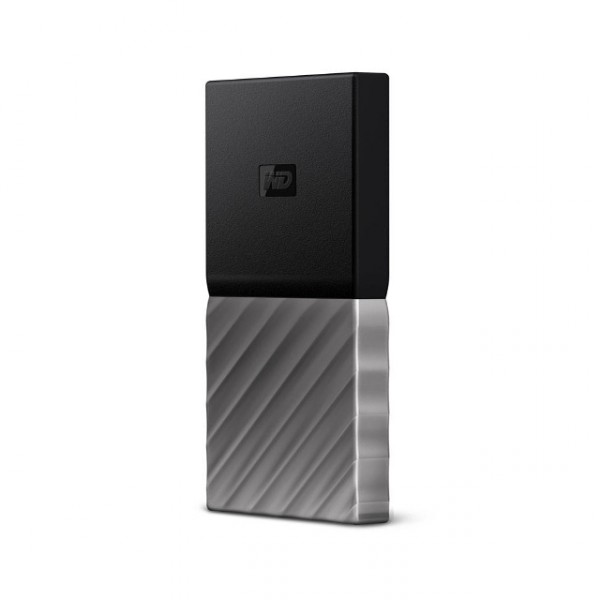
Western Digital launches USB-C external My Passport SSD for Windows 10 and macOS
Solid state drives are absolutely brilliant when installed inside a PC. You know where else they work well? Outside the computer too. As an external storage drive, an SSD offers great speed, but, more importantly, added durability too. Unlike a mechanical external hard disk drive, an SSD does not have moving parts. This makes it a much better option for those that need to take an external storage drive with them when on the go.
Today, Western Digital announces a beautiful new external storage drive. Called "My Passport SSD," the diminutive drive has a single USB-C port for both power and data. Featuring up to 1TB of capacity, it would be an excellent tool for content creators, or anyone that needs additional storage.
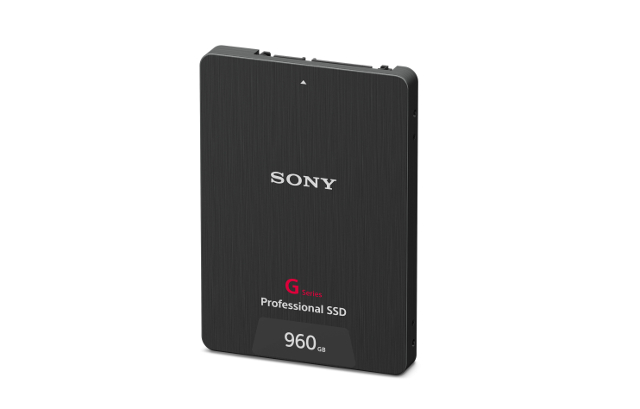
Sony unveils G Series Professional SATA SSD with up to 960GB capacity for content creators
SATA Solid state drives are pretty much all the same nowadays from a speed standpoint. They are as fast as they are going to be, as the SATA interface is saturated and maxed out. With that said, there are ways to improve on these SSDs, such as the type of memory used, the controller, and durability of materials.
Today, Sony unveils the G Series Professional SATA SSD. Designed for video content creators, it comes in two capacities -- 960GB (SV-GS96) and 480GB (SV-GS48). It is meant to be connected directly to certain video cameras, and then connected to a PC. The company claims the drives can last for an impressive 10 years of regular use, and for added durability, the SATA connectors are rated for 3000 insertions and removals. This is apparently six time stronger than the typical SATA connector, which can be rather delicate, actually -- I have cracked a few in my experience.
